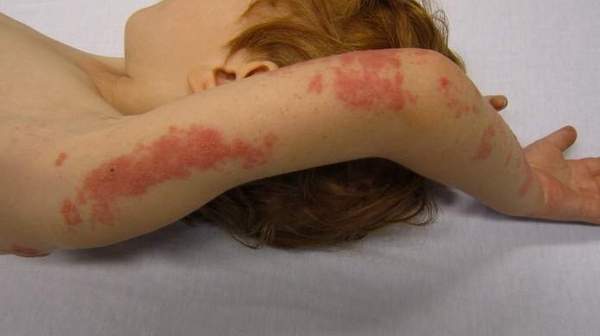What's in this article?
What are Shingles Signs and Symptoms
The signs and symptoms may include: Burning, pain, numbness or tingling. A small red rash that begins a few days after the pain.
When the virus that causes chickenpox reactivates it develop shingles. An early symptoms of shingles include headache, sensitivity to light and flu without a fever. Then you feel itching, tingling or pain where a band, strip, or small area of rash may appear several days or weeks later. Rashes can appear anywhere on the body but will be on only one side of the body the left or right. Rash will first form blisters then scab over and finally clear up over a few weeks. This pain and rash is the clearest sign of shingles.
The rash caused by shingles is more painful than itchy. The nerve roots that supply sensation to your skin run in pathways on each side of your body. When a virus becomes reactivated it travels up the nerve roots to the area of skin supplied by those specific nerve roots. That’s why the rash can wrap around either the left or right side of your body more often from the middle of your back toward your chest. It may also appear on your face around one eye. It is really possible to have more than one area of rash on your body.
Read more about the Fact about Shingles
Symptoms of Shingles
The signs and symptoms of shingles usually affect only a small section of one side of your body.
These signs and symptoms may include:
♦ Pain, burning, numbness or tingling
♦ A red rash that begins a few days after the pain
♦ Fluid-filled blisters that break open and crust over
♦ Itching
Some people also experience:
♦Fever and chills
♦General achiness
♦Headache
♦Fatigue
Pain is usually the first symptom of shingles. For some, it can be intense. Depending on the location of the pain, it can sometimes be mistaken for a symptom of problems affecting the heart, lungs or kidneys. Some people experience shingles pain without ever developing the rash.
Read more about the is “shingles” contagious?
Prevention of Shingles
Keeping the shingles rash clean and covered can help prevent spreading the virus to others who are at risk. Wash your hands with anti-bacterial soap frequently and try not to touch the blisters.
Senior citizens may choose to get vaccinated against shingles. Vaccine reduces the risk of getting shingles and having the widespread nerve pain associated with it. Ask your doctor about shingles vaccination.
Complications of Shingles
Complications from shingles can include:
♦ Postherpetic neuralgia. For some people, shingles pain continues long after the blisters have cleared. This condition is known as postherpetic neuralgia, and it occurs when damaged nerve fibers send confused and exaggerated messages of pain from your skin to your brain.
♦ Vision loss. Shingles in or around an eye (ophthalmic shingles) can cause painful eye infections that may result in vision loss.
♦ Neurological problems. Depending on which nerves are affected, shingles can cause an inflammation of the brain (encephalitis), facial paralysis, or hearing or balance problems.
♦ Skin infections. If shingles blisters aren’t properly treated, bacterial skin infections may develop.
Read more about the shingles treatment.
Treatment of Shingles when the condition getting worse
In some cases, shingles causes long-term complications. Treatment depends on a specific complication.
♦ Postherpetic neuralgia (PHN) is persistent pain that lasts months or even years after the shingles rash heals. Certain medicines such as anticonvulsants, antidepressants and opioids, can relieve pain. Most cases of PHN can resolve within a year.
♦ Disseminated zoster is a blistery rash over a large portion of the body. It can affect the heart, lungs, liver, pancreas, joints and intestinal tract. Treatment can include both antiviral medicines to prevent the virus from multiplying and antibiotics to stop infection.
♦ Herpes zoster ophthalmicus is a rash on the forehead, cheek, nose and around one eye which could threaten your sight. You should seek treatment from an ophthalmologist for this condition. Treatment may include rest, cool compresses and antiviral medicines.
♦ If the shingles virus affects the nerves originating in the brain (cranial nerves), serious complications involving the face, eyes, nose and brain can occur. Treatment depends on the nature and location of the complication.











